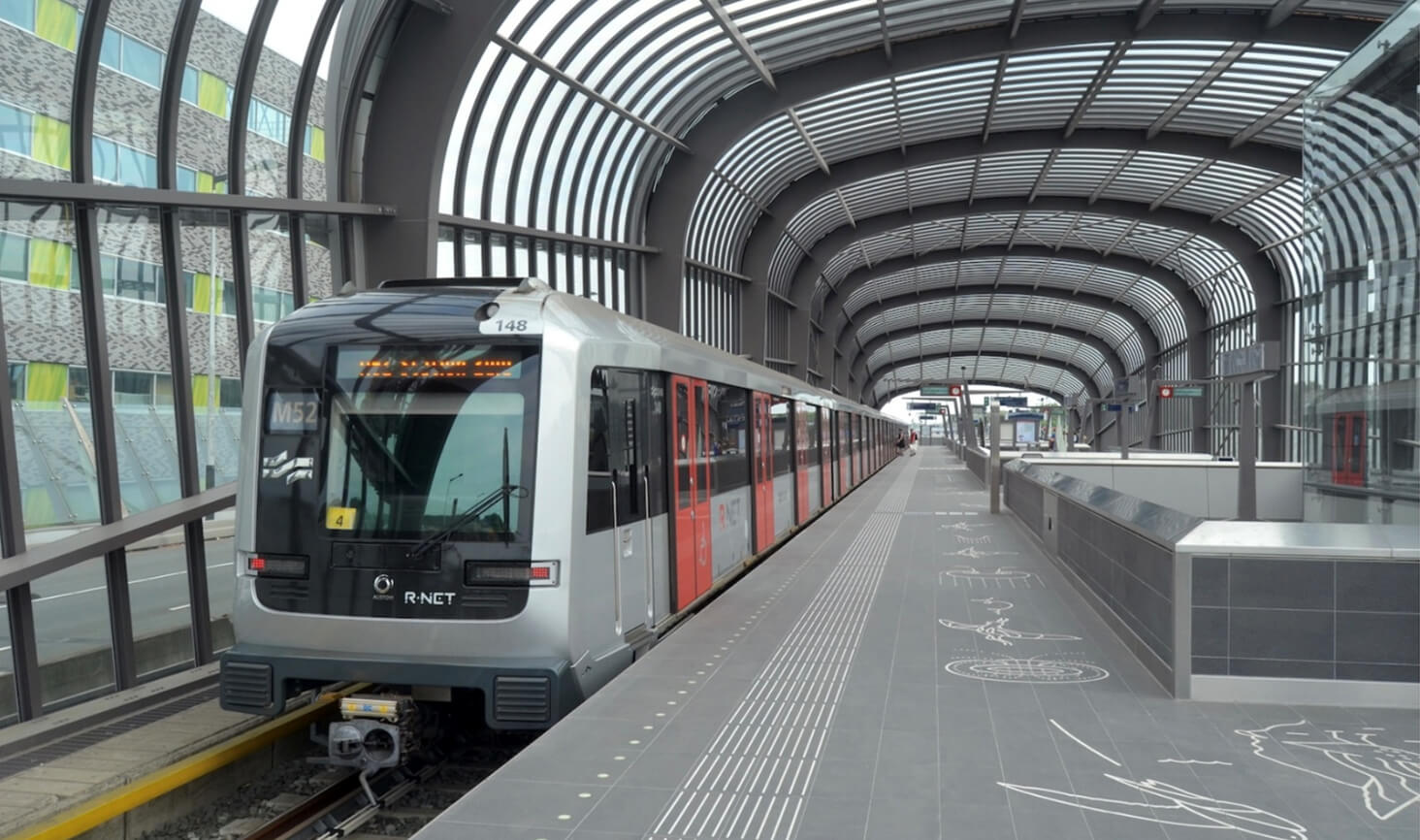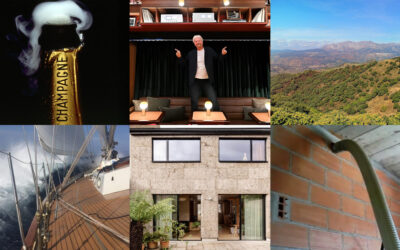Credit: Eirksw / Wikimedia Commons
New uses for cork in rail transport – part 2 of 2
The metro line (52) runs from Amsterdam-Noord under the centre of Amsterdam to Zuid station. Thanks to the recent installation of cork-rubber composite rail pads from Dutch company Alom and Amorim Cork Solutions, vibrations and noise have been considerably reduced for residents.
Mark Rijen, Chief Technical Officer & COO of Alom, said: “Amsterdam is a very old city, mainly built on piles, which posed big challenges for the metro line. We had to meet highly demanding specifications for both noise and vibration control, as well as ensure that the level of adjustment in the complete rail fastening system can compensate for any future settlement in the drilled tunnels.”
Track vibration and noise control
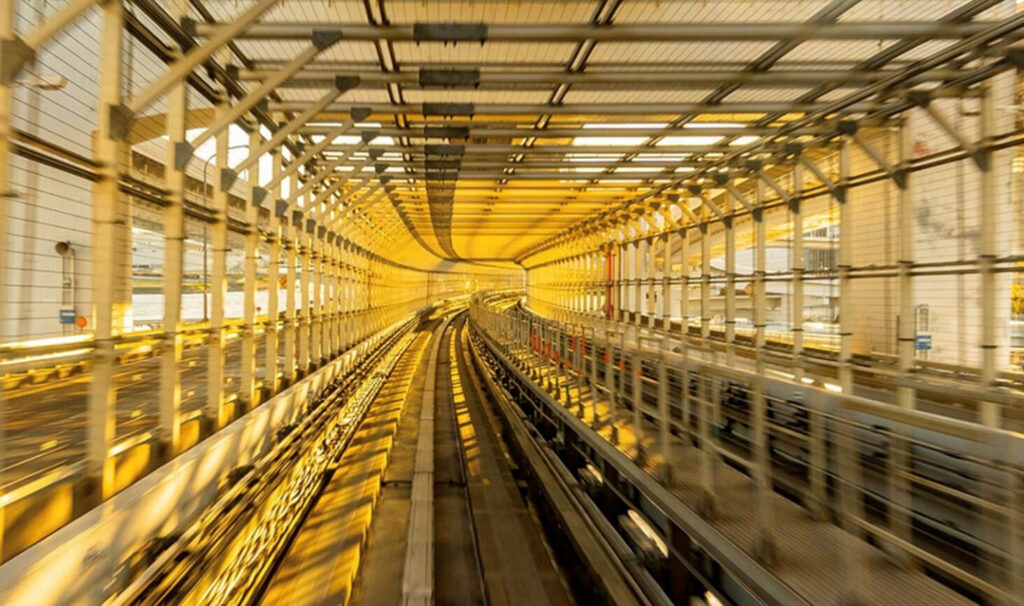
Credit: amorimcorksolutions.com
As rail operators seek to improve the durability and performance of their infrastructure, key components such as rail pads and baseplate pads are coming under scrutiny, and the use of cork-rubber composites are proving to be a smart, long-term option. Rail pads provide a resilient layer between the rail and the sleeper, while baseplate pads interface between the rail and its supporting structure. Both play key roles in load distribution, vibration attenuation and noise control.
“Cork is also virtually inert and very stable within the wide temperature range of rail applications without compromising the properties of the complete product”
– Mark Rijen of Alom.
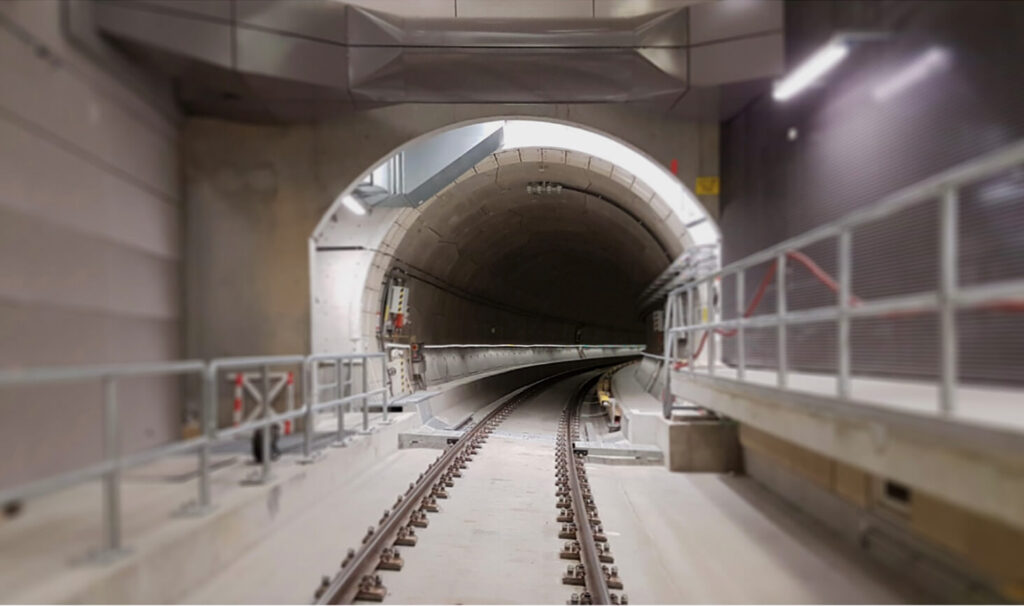
A tunnel on Amsterdam’s Line 52. Credit: railway-news.com
Cork-rubber rail pads are now installed on Amsterdam’s Metro Line 52 (North-South Line) using the Alom NZL49 rail fastening system.
The unique synergy of cork and rubber
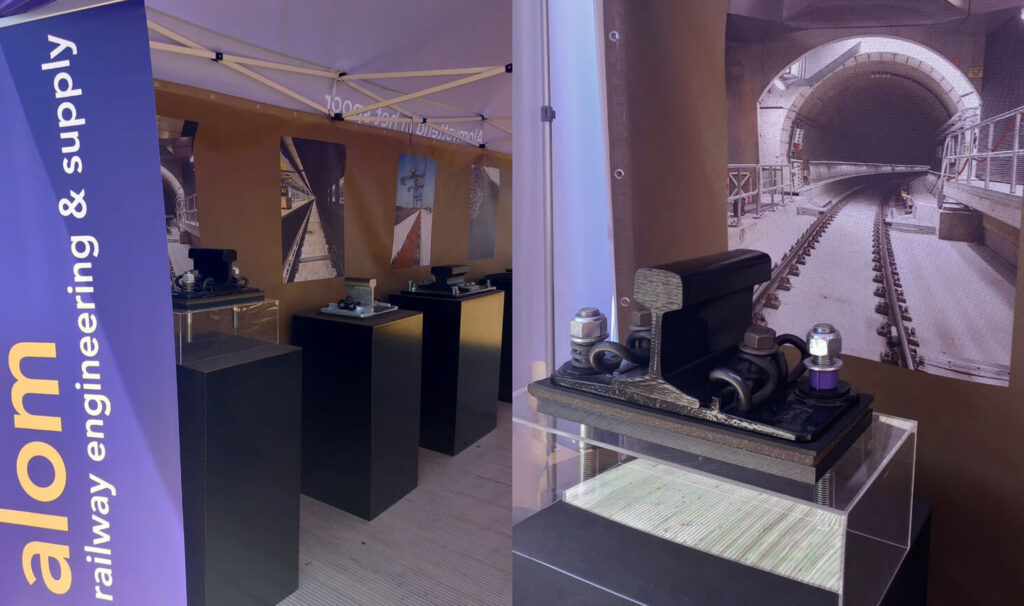
The Alom rail fastening system, exhibited at Rail Live 2025. Credit: Amorim Cork Solutions (via LinkedIn)
The Alom rail fastening system NZL49 was chosen by the Amsterdam public transport company, Gemeentelijk Vervoersbedrijf (GVB), to improve the urban living experience while maintaining the most efficient rail operations. The combination of cork and rubber for the rail pads and baseplates not only mitigates sound and vibrations but also lowers the environmental footprint, since cork is a 100% natural material.
Tests carried out by Dekra, an independent organization authorised to certify processes and products in the rail sector using simulations undertaken at the University of Leuven in Belgium showed the system has a minimum lifespan of 25 years and was better at maintaining mechanical properties over time and under varying temperature conditions compared with elastomer only materials.
There is a unique synergy between cork and rubber: the cork contributes natural compressibility, low density and intrinsic damping while the rubber provides elasticity, mechanical strength and resistance to wear and fatigue.
Further information from railway-news.com:
Railway-News Magazine, issue two, pages 36 & 37 – railway-news_magazine_issue_two
Noise and Vibration Reduction on Amsterdam’s Metro Line 52 – railway-news.com/noise-and-vibration-reduction-on-amsterdams-metro-line-52
#CorkInnovation #CompositeMaterials #CorkRubberRailPads #SustainableRail #RailTransportDesign

